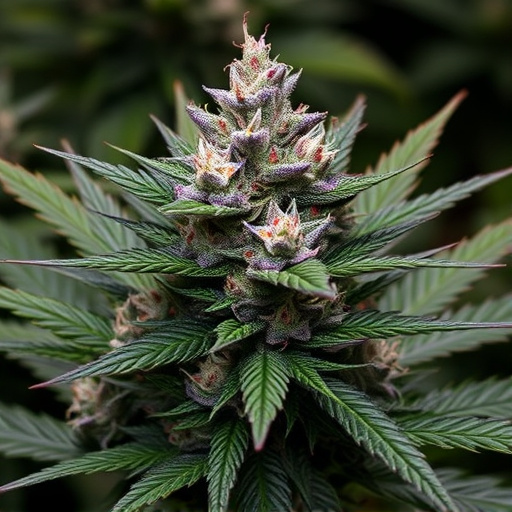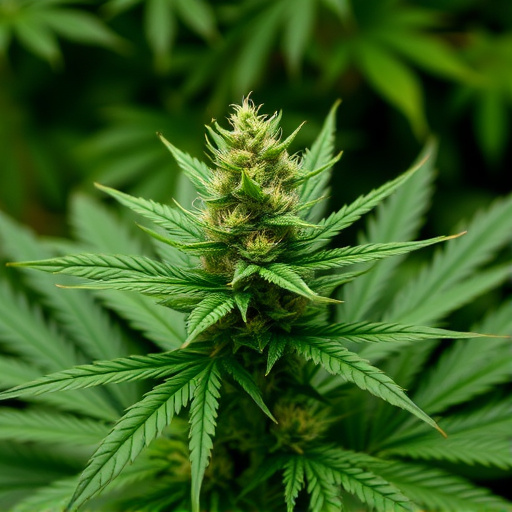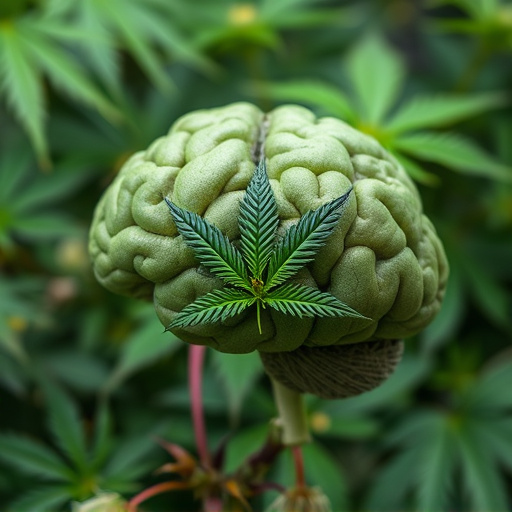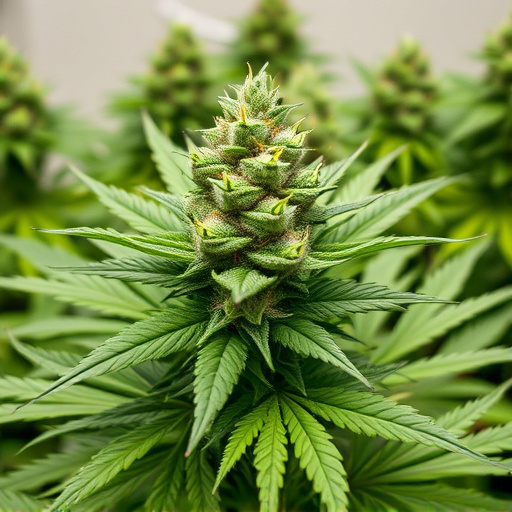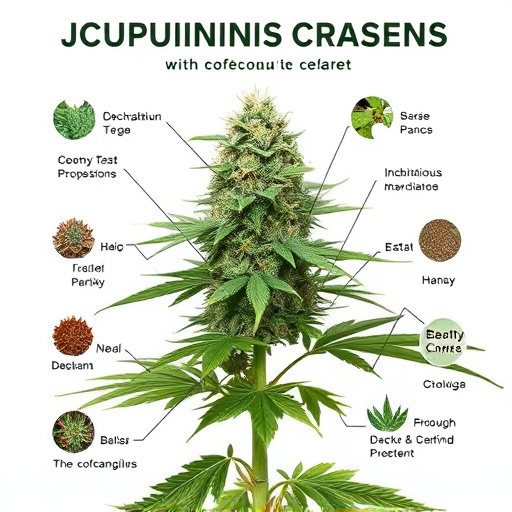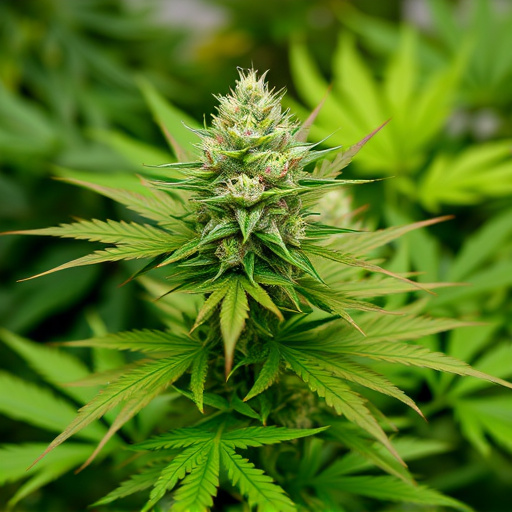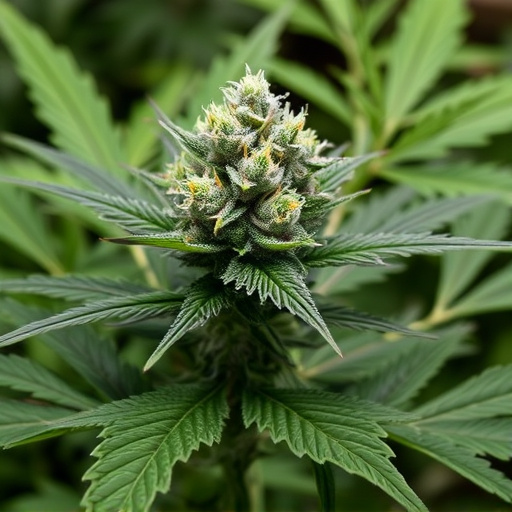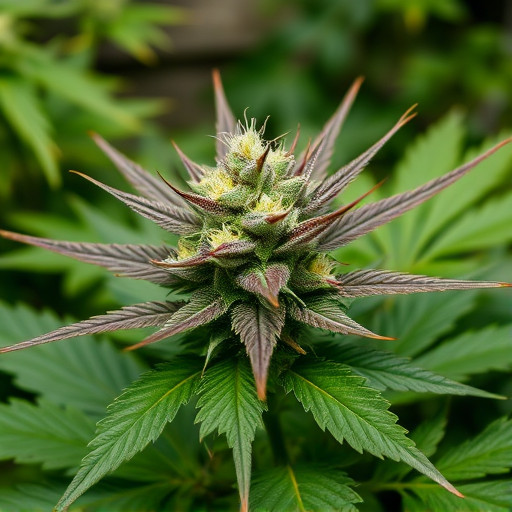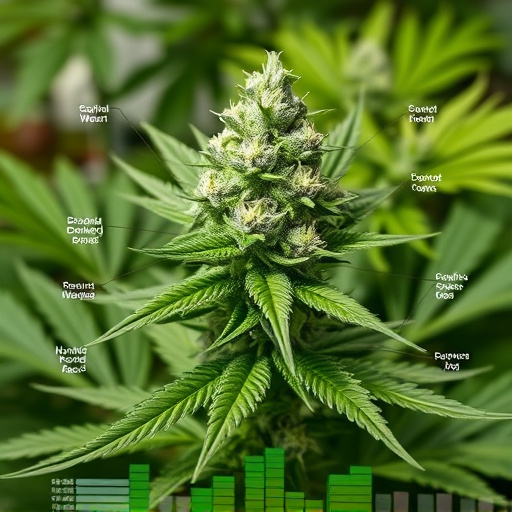Identifying cannabis strains is a complex task due to genetic diversity and environmental influences, particularly temperature. Each strain has unique genetic traits affecting physical attributes like leaf shape, color, and structure. Cultivators must understand these genetics to breed specific strains or uncover rare characteristics by optimizing conditions for desired traits. Temperature plays a critical role in growth rate, morphology, and strain consistency, with an optimal range of 68°F to 86°F (20°C to 30°C) promoting ideal development. Deviations impact metabolic processes, altering bud density, resin production, color, leaf size, bud abundance, terpene profiles, aroma, and effects, making accurate strain identification challenging but rewarding for experts who master the relationship between genetics and environment.
Unravel the enigmatic relationship between genetics and temperature, as they orchestrate the unique appearance of cannabis plants. This article explores how these factors shape the diverse world of cannabis, offering insights into its visual cues. From understanding genetic diversity to deciphering the impact of temperature on growth, we’ll guide you through the process of identifying cannabis strains based on their distinctive features. Discover the art of recognizing these visual clues and unlock a deeper appreciation for this multifaceted plant.
- Understanding Genetic Diversity in Cannabis
- The Role of Temperature in Cannabis Development
- Identifying Cannabis Strains Based on Visual Cues
Understanding Genetic Diversity in Cannabis

Cannabis, a plant with a rich genetic diversity, presents a fascinating challenge when it comes to understanding its appearance and characteristics. Identifying cannabis strains is a complex task due to this very diversity. Each strain carries unique genetic traits that influence its physical attributes, such as leaf shape, color, and overall structure. By studying these genetics, researchers can begin to decipher why certain strains exhibit specific traits under different environmental conditions, particularly temperature.
This complexity is further compounded by the fact that cannabis plants are highly sensitive to their environment. Temperature plays a pivotal role in shaping the plant’s development, influencing growth rates, cannabinoid production, and even the final visual appearance. Therefore, understanding the interplay between genetics and temperature is crucial for cultivators aiming to breed specific strains or identify unique characteristics, ensuring optimal conditions for desired traits to emerge.
The Role of Temperature in Cannabis Development
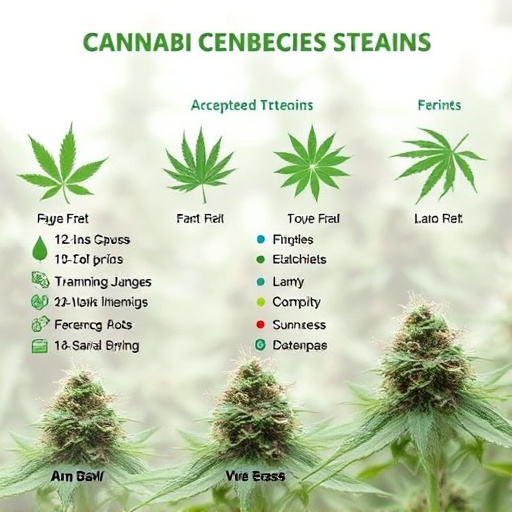
Temperature plays a pivotal role in the development and final appearance of cannabis plants, significantly impacting their growth rate and overall morphology. The ideal temperature range for cannabis cultivation is typically between 20°C to 30°C (68°F to 86°F), fostering optimal growth and ensuring consistent characteristics across different strains. Deviations from this range can alter the plant’s metabolic processes, leading to visible variations in traits like bud density, resin production, and even color development.
Understanding temperature’s influence is crucial for identifying cannabis strains, as it contributes to the unique features that set apart various types. For instance, higher temperatures tend to stimulate faster growth, potentially resulting in plants with larger leaves and more abundant but smaller buds. Conversely, cooler temperatures can slow down growth, producing plants with tighter bud structures and enhanced terpene profiles, which are key factors in determining the final product’s aroma and effects when consumed.
Identifying Cannabis Strains Based on Visual Cues
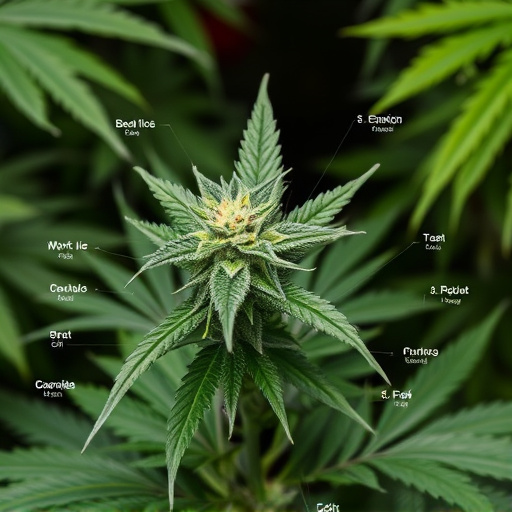
Identifying cannabis strains purely by visual cues can be a captivating art form for enthusiasts and cultivators alike. The diverse appearance of cannabis plants, from leaf structure to trichome development, offers subtle hints about their genetic makeup and potential effects. Experienced eyes can spot distinctive traits like unique bud shapes, the density and arrangement of hairs (trichomes), and even colour variations, all of which contribute to a strain’s visual identity.
While genetics play a significant role in shaping these visual characteristics, environmental factors, especially temperature, also leave their mark. Optimal growing conditions can enhance the expression of desirable traits, making it easier to identify specific strains. Understanding this interplay between genetics and environment is key to mastering the art of identifying cannabis strains based on visual cues.
Genetics and temperature play a dynamic role in shaping the diverse appearance of cannabis plants, offering growers valuable insights for identifying cannabis strains. By understanding these factors, cultivators can optimize conditions to produce desirable traits, enhancing both visual appeal and potential therapeutic benefits. This knowledge is essential for navigating the vast world of cannabis genetics and selecting the perfect strain based on visual cues.


